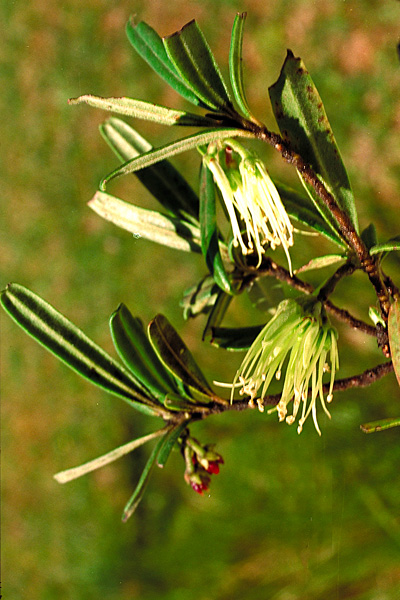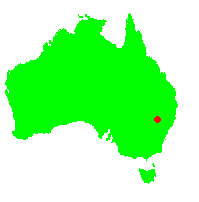General Description:
The genus Leionema comprises 27 species which were previously part of the genus Phebalium. 26 species are endemic to Australia with Leionema nudum being endemic to New Zealand. Most species are small shrubs with very aromatic foliage and produce clusters of small, star-like flowers in the cream to bright yellow range.
Leionema viridiflorum is a small shrub, usually less than 1 metre in height which occurs in fairly dry situations in open forests or woodlands in the Warrumbungle and Mt. Kaputar ranges in northern New South Wales. It has oblong to elliptic leaves up to 40 mm long and 8 mm wide. Together with a few other members of the genus, L.viridiflorum is unusual in that it has flowers with prominent stamens which project well beyond the length of the floral tube (eg. L.carruthersii). In most other species the stamens are shorter and more spreading to give a starry appearance to the flowers. The small flower cluster consist of 6-12 pale yellow-green flowers. Flowering occurs in late winter – spring.
Because of its rarity, L.viridiflorum is rarely seen in cultivation but it would make an interesting small shrub for sunny, well drained positions.
In common with most members of the Rutaceae, propagation from seed is difficult but cuttings usually strike readily.
* EPBC Act = Environment Protection and Biodiversity Conservation Act 1999;
ROTAP = Rare or Threatened Australian Plants (Briggs and Leigh, 1988)
For further information refer the Australian Plants at Risk page

Leionema viridiflorum
Photo: Brian Walters
 Australian Native Plants Society (Australia)
Australian Native Plants Society (Australia)